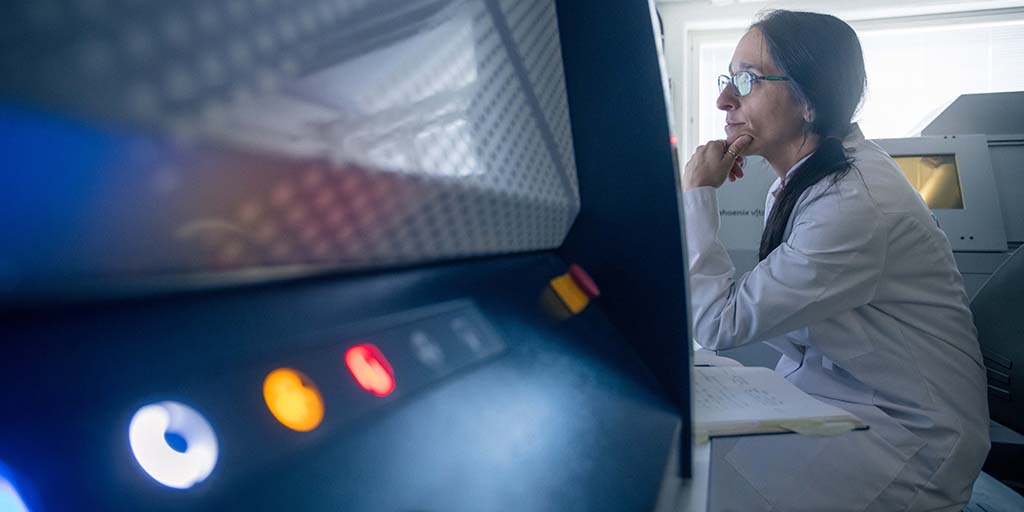Micro-XRF
Micro-XRF is a non-destructive, versatile analytical technique that can be used in a wide variety of applications.
The micro-XRF instrument is an M4 Tornado PlusAMICS by Bruker. It is an elemental analysis technique that relies on the same principles as XRF. Its measurements give information about composition and element distribution, even from below the sample surface. The method is non-destructive, requires little to no sample preparation, and is optimized for high-speed analyses of points, lines, and 2D areas (element mapping) of a wide range of materials.
The micro-XRF has a primary X-ray tube (Rh source) with polycapillary optics for excitation of spot sizes < 20µm (for Mo-Kα); a secondary X-ray tube (W source) with collimator for excitation of ‘heavy’ elements, embedded in lighter matrices; two silicon drift (SDD) detectors to increase acquisition speed, identify diffraction peaks and limit shadowing effects on non-planar samples; a sealed sample chamber with adjustable pressure between 1 mbar and atmospheric pressure; a sample stage with measurable area of 200 x 160 allowing sample height of up to 120 mm and maximum sample weight of 7 kg; a He-flush to increase light element performance in biological or wet specimens; and AMICS software for automated mineral analysis.

